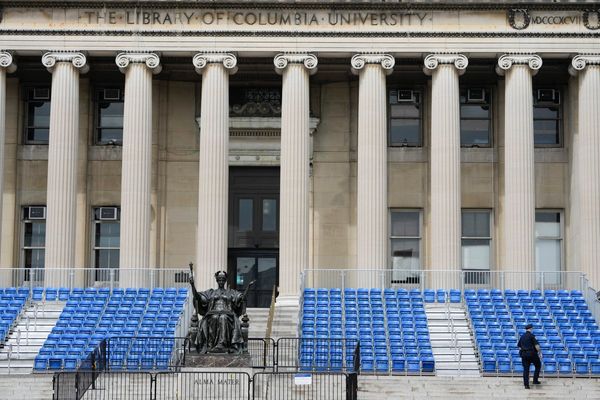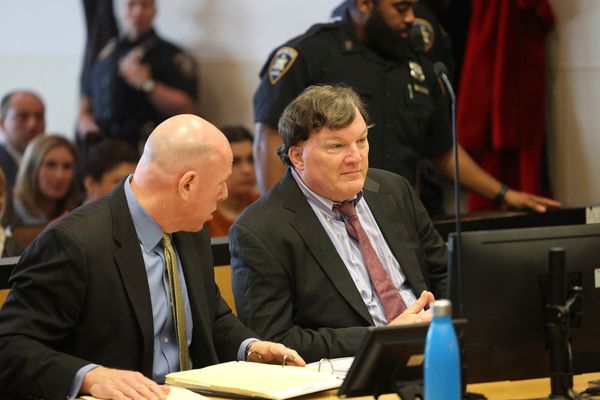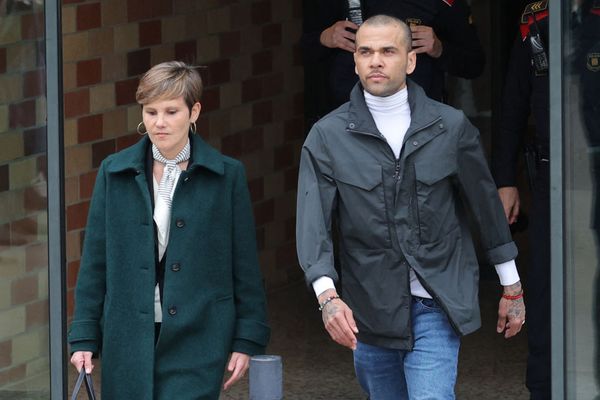
Zand Katwijk doesn’t just serve food and drinks – this beachside restaurant offers “shots” of sunscreen too.
It is one of 160 hospitality venues around the Netherlands taking part in a new sunburn prevention scheme. The small, wet and windy country might not be known for its tropical climes, but the Dutch have one of Europe’s highest diagnosis rates for melanoma, the deadliest form of skin cancer.
“They have researched different types of cancer and where they occur, and one of the conclusions was that places like Katwijk have more skin cancer than average,” said Dirk Schipper, the fourth generation of his family to run this business. “People come here for sun, sea and sand… but things have changed in our 94 years.”
Recently, customers would sometimes ask for a squirt of sun cream, so when a health insurer created 100,000 promotional “shots” of factor 30 this June, Schipper ordered three boxes, selling the 30ml bottles at the cost price of €2.99. “People have called it a lifesaver,” he said. “We have a moderate, sea climate, so the wind often cools things off but at the same time the sun’s rays are really strong. Without noticing, you can burn to a crisp. Offering this should be as normal as offering a napkin.”
One in five people in the Netherlands will get a form of skin cancer in their lifetime, according to the Netherlands Comprehensive Cancer Organisation (IKNL). It is the most common form, representing 52% of cancer cases and growing faster than the population ages – sparking concern from charities like KWF Dutch Cancer Society, Dutch authorities and insurers who foot the bill.
More Dutch people are not dying from skin cancer – probably due to good diagnostics and treatment – but the costs are rising. The health insurer behind the scheme, Zilveren Kruis, believes that 95% of cases could be prevented by proper use of sun protection.
Healthcare in the Netherlands is provided via mandatory health insurance, by private companies, and the government regulates what must be in a “basic” health insurance. Zilveren Kruis is one of the major providers.
Local authorities, sports clubs and schools have also been installing sun cream dispensers in public locations such as beaches and parks to encourage wider use. But new research suggests that restaurants terraces are a key location where people are likely to burn.
At Zand Katwijk, customer Petra Hoogeveen, 71 from Leiden, said that both her mother and son had experienced skin cancer. “People who live in warmer countries like Spain try to avoid the sun, but we don’t: we go in search of sun,” she said. “I don’t really go in the sun, because I find it too warm… but I don’t really use sun cream either.”
Dagje Den Haag boat, bike and walking tours company in The Hague ordered 100 tubes. Rogier Soetekouw, the owner, said his staff are encouraged to wear hats and sun protection. “It’s logical to take it to the beach but you need it in the city too,” he said.
Dermatologist Dr Daniel Kadouch and founder of Tenue Soleil, a UV clothing maker which created the suncream for the campaign, said: “I think it’s a combination between the UV index that has risen in the last 10, 20 years, but also it’s a lot about lifestyle. We try to educate people that sun protection is a combination of measures: staying out of the sun during peak hours, trying to cover as much of the skin with clothing … including hat and sunglasses, and then for the remaining skin that’s exposed, apply an SPF of 30 or higher and reapply.
“The American Skin Cancer Foundation is very clear on the link between sunburn and skin cancer: if you have five or more sunburns, especially during childhood, [this] doubles your risk. Research from Maastricht University on the psychology of sun protection has shown that one-third of people still get sunburned.”
Dr Arjan van Dijk, a researcher at the RIVM public health institute who advised the health ministry on a skin cancer education campaign, said that while precise causes are difficult to establish, the numbers are growing due to an ageing population with a lifetime’s worth of skin damage.
“The issue starts with the Dutch people being fortunate to have an increasing life expectancy: that is the major cause of the skin cancer trend,” he said. “We are similar to Danish and Scottish people: [many people] have a relatively light type of skin that gives you a disadvantage in this issue. And Dutch people tend to be in love with the sun, so as it starts to be spring, we all run off outside and expose ourselves!”
A history of bad weather is one reason for societal behaviour around the sun, according to Prof Peter Jan Margry, a cultural historian at the University of Amsterdam. “The Dutch always have the feeling that they are missing the sun because it’s such an overclouded sky, it’s always raining and we never shut our curtains,” he said. “I have lived in Rome and everybody keeps their shutters and curtains closed to keep out the sun – but the Dutch want the light inside, due to the lack of sun.”
But as climate change brings warmer weather, heat waves and drought, some believe a cultural shift is needed. “We are not saying that tanning behaviour or holiday behaviour is to blame,” said van Dijk, “but the advice that we give to change behaviour is the only steering wheel we have to turn this oil tanker, years in advance.”







